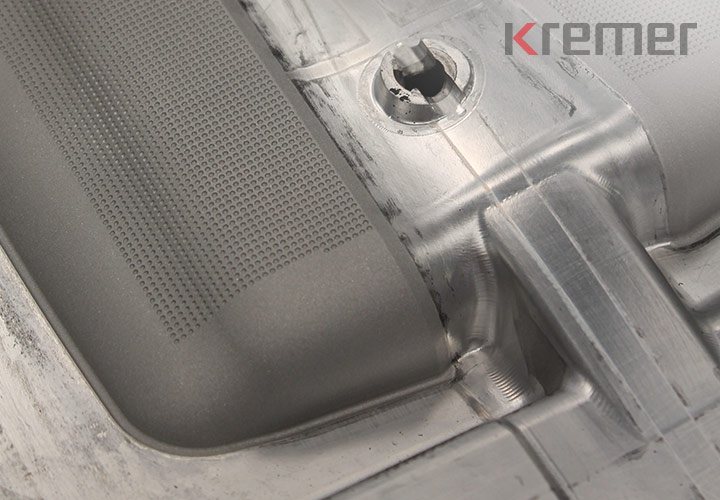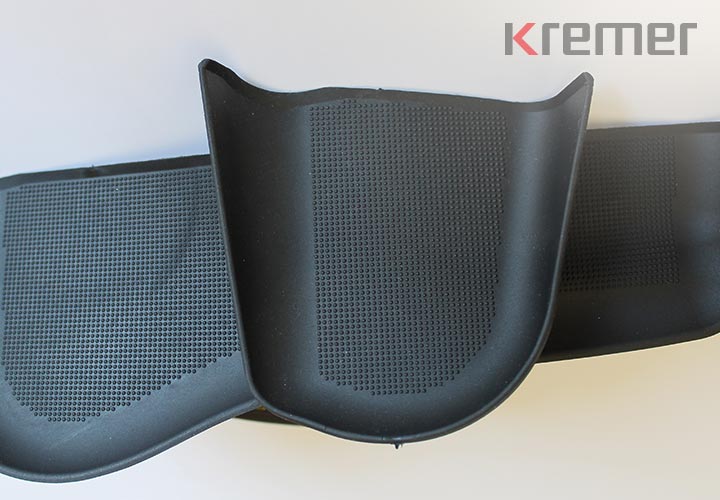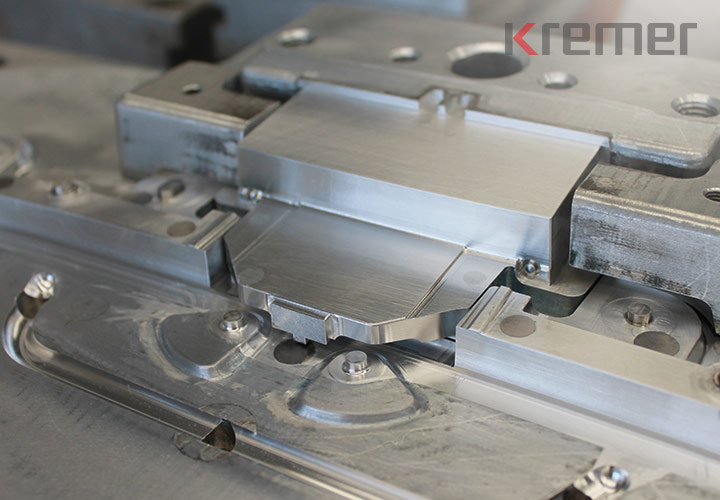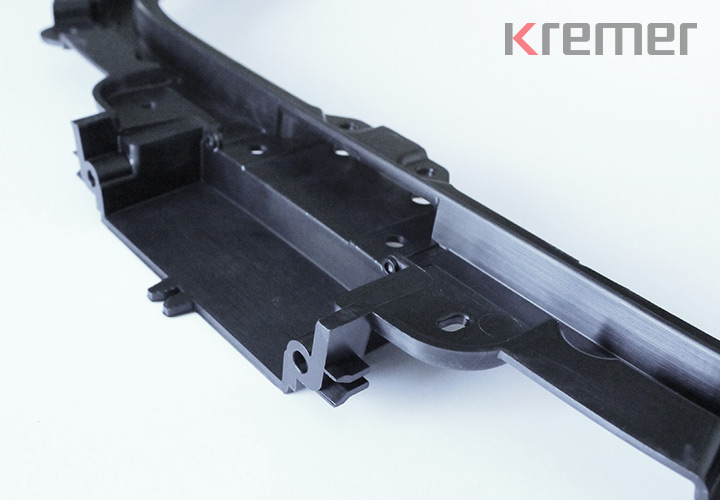Injection molded parts made from thermoplastics
Variety in material and design
Variety in material and design
Fhe injection molding process is used for the production of moulded plastic parts. The hot, liquid plastic (e.g. ABS, PA, PC, PE, PMMA, PP, PS, PU or SAN and others) is injected into a temperature-controlled - usually cooled - mold. The plastic cools down in the mold and solidifies (injection molding process).
As soon as the plastic molded part is dimensionally stable and can no longer deform, it is removed from the mold fully or semi-automatically. With suitable geometry and large production quantities, a handling device or a removal robot can be used for demolding and deformation-proof depositing of e.g. visible parts.
If the products have been designed to be suitable for plastic and demouldability is guaranteed, there are virtually no limits to the shape, geometry, size, weight, color and surface structure. Of course, we are also happy to support you in the very early stages of product development and contribute our expertise.
This know-how can sometimes lead to a different manufacturing process being brought into play instead of the injection molding process and discussed with you as an alternative in the pre-quotation meeting. The material PVC allows for considerations in this respect, as KREMER can also offer the dipping process and the casting process in addition to the injection molding of PVC. If you would like to inquire about plastic molded parts made of PVC, we recommend that you read the comprehensive information on PVC dipped parts or our blog posts on PVC applications.
You can also consider whether it might be worth building an aluminum tool instead of a steel tool due to very low demand. We can provide you with further information on this.
Rapid Prototyping via 3D-Druck

We work for you as economically as possible. Whenever you want to produce a small or very small number of items or need to be absolutely sure that everything fits perfectly before series production with a prototype, the Rapid prototyping process. The advantage here is not only cost-effectiveness, but also speed. Take advantage of our experience in the discipline of 3D printing: fast, competent, efficient.
Three good reasons for KREMER
Three good reasons why we are your ideal supplier for plastic molded parts:
Personal advice
For completely new designs in particular, your personal contact person will advise you from the initial idea, through optimization during prototyping or series production, to the final delivery - we are there for you personally.
Competence
Elastomers and thermoplastics are our world. We know them all - from the rarely used materials to the most efficient processes. From simple shaping to complex 2-component parts. Complicated tasks awaken our inventive spirit. You are welcome to challenge us.
Quality
For us, quality starts with listening. We can only deliver perfectly if we know exactly what you need. We take the time for a detailed project description, only use high-quality products and work with suppliers that we know and trust.
For you, this means quality assurance, to which we are committed with TQS - right from the start.
Numbers – Data – Facts
Information from KREMER
Number of molded parts delivered
Realized drawing parts
Number of active customers
Sales share of largest customer in %
Contact


Inquiry plastic molded parts
Sales to commercial customers only
Note on mandatory fields and data protection
Mandatory fields are marked. All other fields are voluntary. Your data will only be collected and stored electronically strictly for the purpose of processing and answering your request. Information on data processing can be found in the privacy policy.
Further information
Injection molding tools made of aluminum
The production of tools for injection-molded Molded plastic parts or TPE kDepending on the geometry of the molded part and the processing steps required in toolmaking, small and medium quantities are a not insignificant cost factor. A decision must be made on a case-by-case basis as to which type of mold should be used. One criterion for the pros and cons is the investment decision.
We offer the advantages of aluminum tools suitable for series production to innovative industries that only address a limited group of customers and therefore do not think in terms of large quantities. Aluminum tools are not only suitable for the production of prototypes. They offer considerable price advantages for the series production of small and medium quantities. Aluminum tools are about half the price of steel tools.
Advantages of aluminum tools
- Significantly lower tool costs compared to steel molds
- High milling speeds
- Lower hourly machine rates in toolmaking
- No finished part distortion, as the aluminum injection molds can be equipped with cooling channels like steel molds
- Realization of identical surfaces as with tool steels is possible (eroding, etching, polishing, etc.)
- Significantly higher thermal conductivity compared to steel
Especially for the production of small quantities, the higher thermal conductivity of aluminum has a considerable influence on the heating and cooling speed of the tool and thus on the production time and production costs of the product series.
Alternatively, there is always the option of testing 3D printing. The KREMER team of experts uses its in-depth experience to provide advice and is familiar with the advantages and disadvantages of the respective tool processes and prototyping applications.













